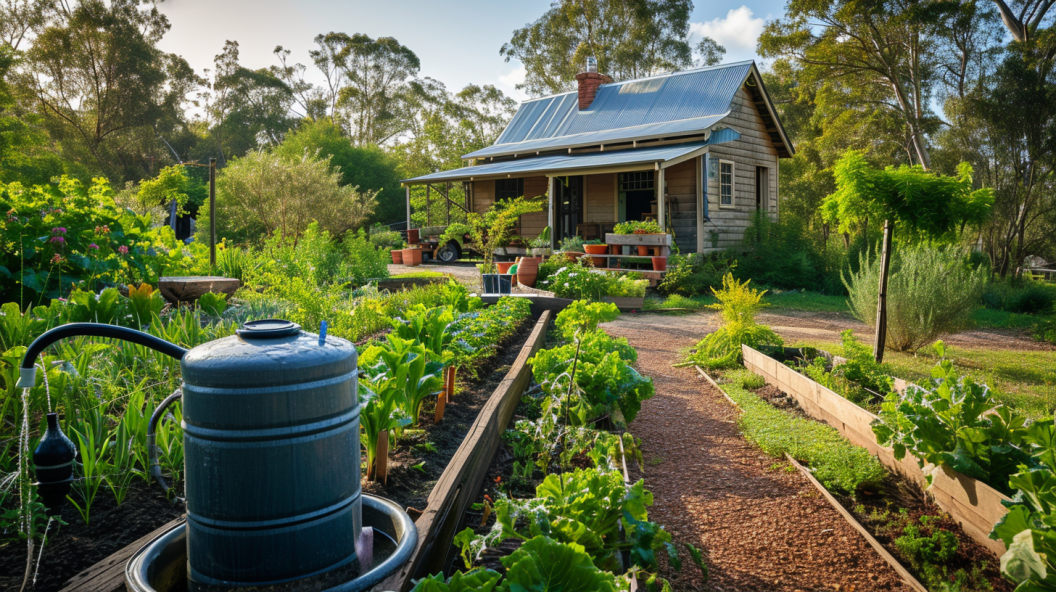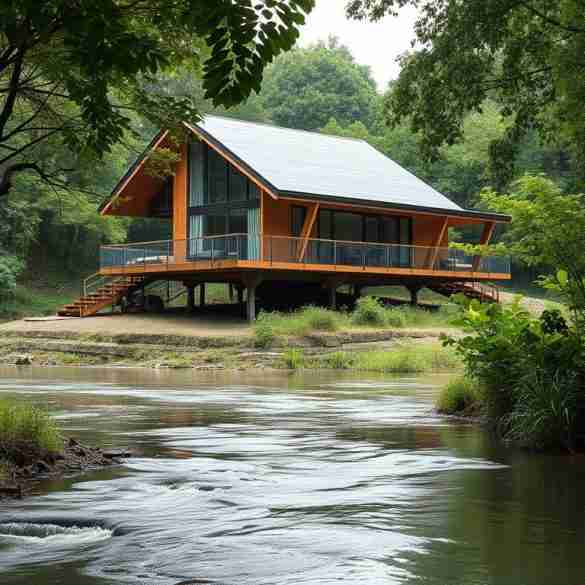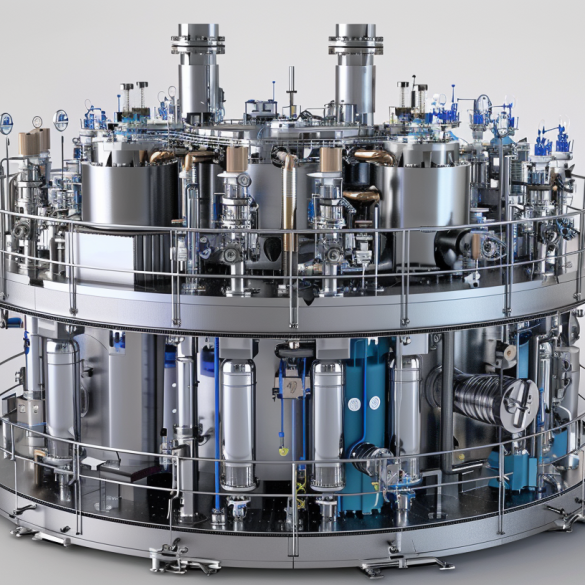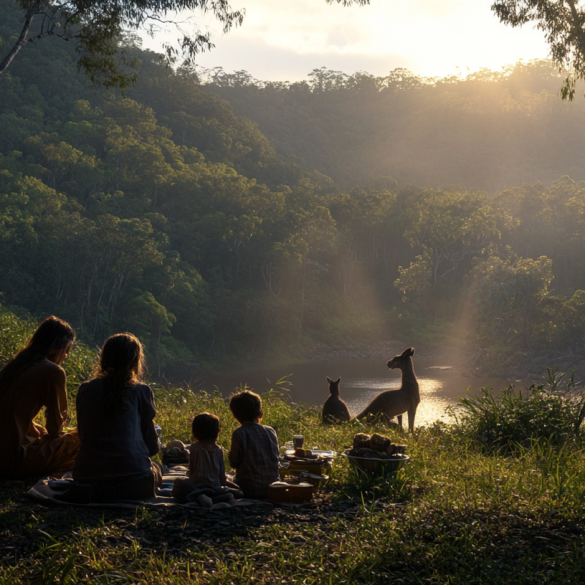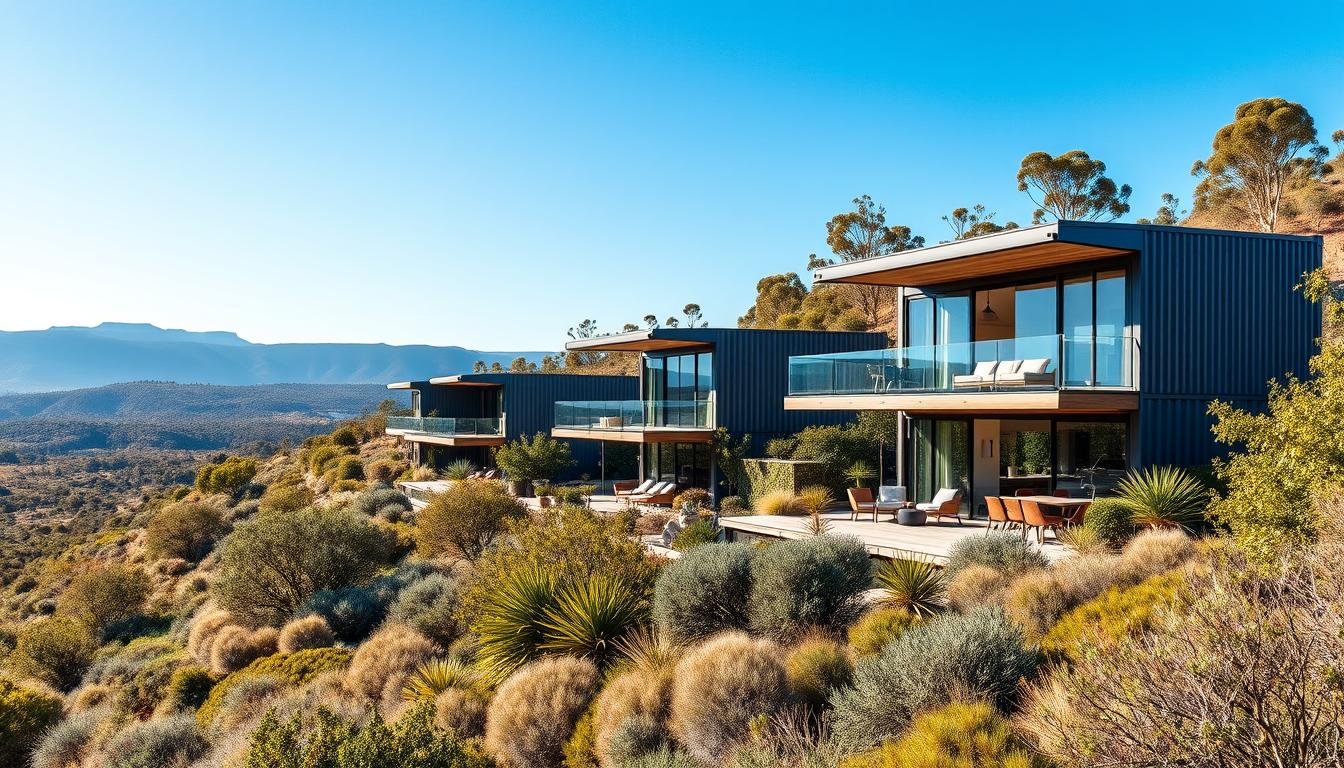Embracing the rustic tapestry of Off-Grid Living Essentials is a narrative not just penned by back-to-the-land enthusiasts but by anyone seeking a harmonious melody of sustainable living and self-sufficiency. Within these lines, you’ll find your compass to navigate through whispering pines and the golden calm of autonomy. As solar panels glisten under a stoic sun, you are beckoning the heart of renewable energy sources, thus inviting a symphony of sustainability into your life.
Powering your very existence from the world beneath your feet and the sky above, the off-grid lifestyle proposes an intimate dance with the elements. Every day presents a unique verse in the poetry of resilience, painting both the sun’s brilliance and the storm’s fury into the tableau of your homestead.
Welcome to Sustainable Home Magazine, where we unfurl the scroll of knowledge and wield the quill of experience to chart your course into living off-the-grid. This guide is your steadfast ally, ensuring each step taken is imprinted with purpose and clarity on your journey towards energy independence.
Key Takeaways
- Understand the tenets of Off-Grid Living Essentials for a successful transition.
- Learn the principles of sustainable living to harmonize with natural cycles.
- Discover the rewards of self-sufficiency and energy independence.
- Embrace renewable energy sources as your sustainable power allies.
- Gain insights into how off-grid living can ignite personal and environmental transformation.
- Acquire knowledge on powering your home with nature’s benevolence.
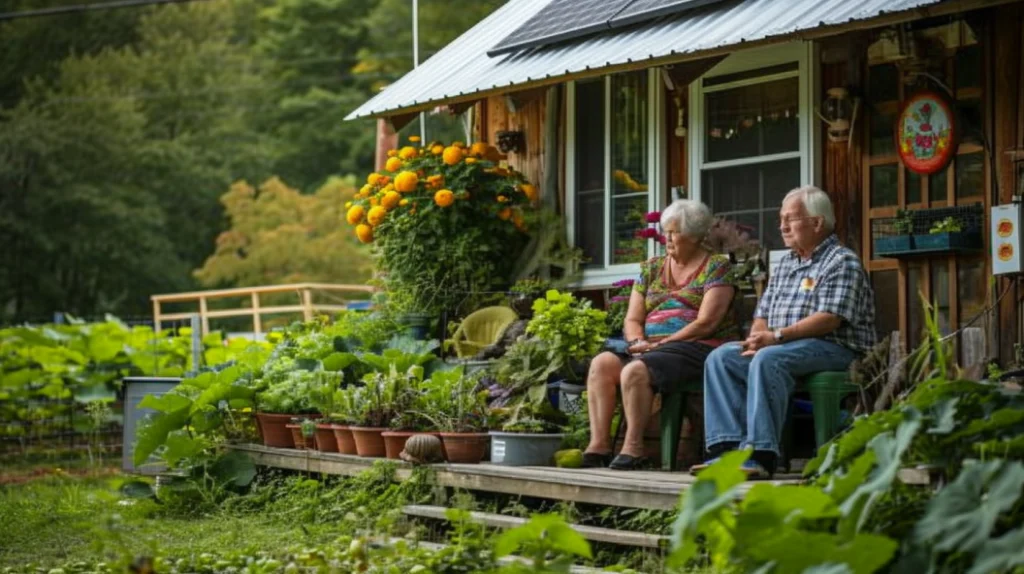
The Rise of Off-Grid Living in 2023
As we progress further into the year, sustainable living is not just a trend; it’s a growing movement. Individuals like you are increasingly drawn to the self-sufficiency that off-grid living affords, crafting a life that’s harmonious with the environment while embodying true energy independence. With the escalating concern over climate change and a prevailing desire for autonomy, an off-grid lifestyle has become an embodiment of personal and ecological responsibility.
Reasons People are Choosing a Self-Sufficient Lifestyle
At the heart of the shift towards off-grid living is the commitment to sustainability. This lifestyle enables you to leverage renewable energy sources such as solar, wind, and hydro-power, drastically reducing the carbon footprint. Equally important is the sense of resilience and freedom it brings, as you’re no longer subject to utility outages or fluctuating energy costs.
- Reduction in environmental impact
- Greater control over personal resources
- Less dependence on the conventional power grid
- Opportunities for innovative home design and construction
Real-Life Transformations: Embracing Nature, Family, and Freedom
Adopting an off-grid lifestyle is transformative at its core; it fosters a deeper connection with the natural world, strengthening family bonds, and granting the kind of freedom that’s hard to find in a conventional setting. This intentional mode of living places you in the center of your universe, where your daily tasks are imbued with significance as they contribute directly to the well-being of your family and home.
| Benefit | Impact |
|---|---|
| Connection with nature | Improved mental and physical health |
| Close-knit family relationships | Shared experiences and values |
| Freedom from the grid | Autonomy in managing life’s essentials |
| Fossil fuel independence | Contribution to a greener planet |
As you, the reader of Sustainable Home Magazine, contemplate a move towards an off-grid haven, reflect on the commitment to sustainable living that is key to this transition. It’s about making a deliberate choice for energy independence, prioritizing self-sufficiency, and harnessing renewable energy sources to build a life in simplicity, harmony, and freedom.
Off-Grid Living Essentials: A Step-by-Step Approach
Embarking on an off-grid lifestyle is an exciting journey towards self-reliance and environmental harmony. To begin your venture into Off-Grid Living Essentials, it’s crucial to adopt a structured, step-by-step approach. This includes understanding the fundamentals of sustainable agriculture and water conservation, which are pillars of living sustainably off the grid. In this article, presented by Sustainable Home Magazine, we will guide you through the primary considerations and off-grid living tips essential for setting up your sustainable haven.
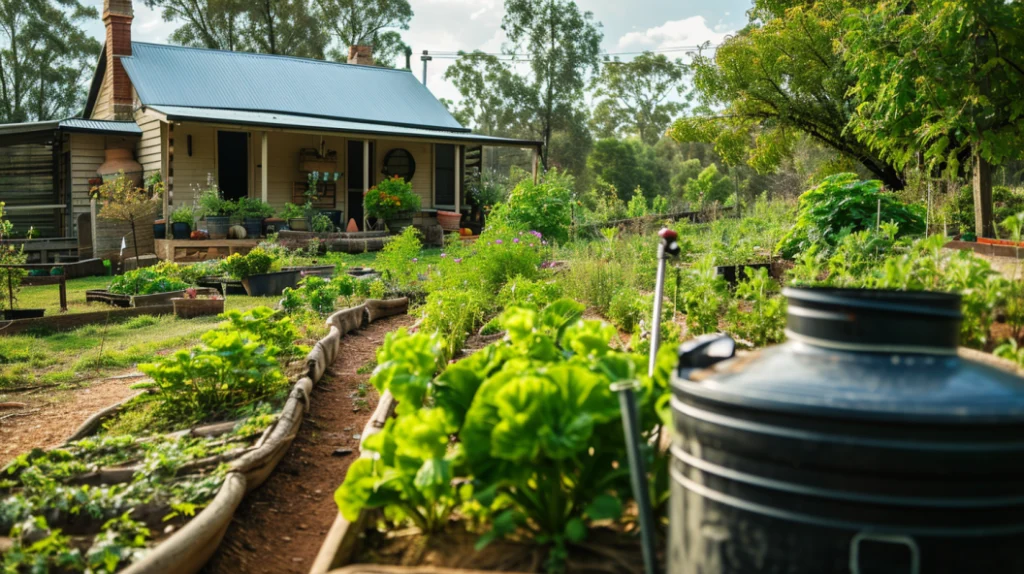
Finding the perfect location is your starting point. You’ll want a place that resonates with your environmental values and supports sustainable practices. From there, the layout and construction of your home come into play, with an emphasis on maximizing efficiency and minimizing impact.
Here’s a breakdown of the essential steps:
- Location Choice: Consider climate, land fertility, and natural resources for sustainability.
- Eco-friendly Building: Use renewable materials and designs to reduce energy use.
- Renewable Energy Integration: Implement solar panels, wind turbines, or micro-hydro systems.
- Water Conservation Systems: Employ rainwater harvesting and greywater treatment.
- Sustainable Agriculture Installation: Develop gardens using permaculture principles.
Now, let’s dive deeper into the first two main essentials: sustainable agriculture and water conservation. Sustainable agriculture is not just about planting crops; it involves creating an integrated ecosystem on your property that can provide for your nutritional needs while maintaining the health of the land. Essential techniques include crop rotation, natural pest management, and soil fertility practices that reduce the need for chemical fertilizers.
When it comes to water conservation, the key is to think ahead about storage, usage, and replenishment. Rainwater collection and storage, when coupled with mindful usage, stretch your water reserves. Greywater recycling and drip irrigation systems are also effective methods to consider. Above all, responsible usage is the cornerstone of conservation.
Remember, success in off-grid living not only depends on your ability to live with nature but also to become a steward of the environment. Embracing Off-Grid Living Essentials is about building a life that sustains you while you sustain it.
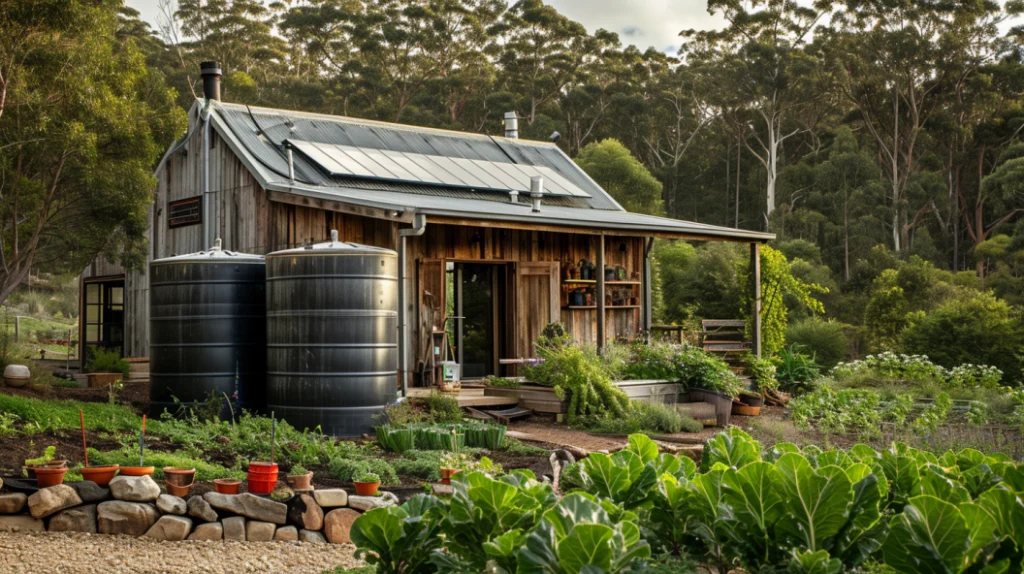
Scouting the Perfect Location for Off-Grid Living
Embarking on off-grid living requires careful site selection. Your choice of location can define the success of your sustainable living goals. As highlighted in Sustainable Home Magazine, certain elements are crucial when identifying the perfect homestead for an off-grid lifestyle.
Essential Factors When Buying Land
When you’re considering off-grid living essentials, the significance of the right land cannot be overstated. Here are some vital attributes to consider for the land that will support your self-sufficient ambitions:
- Proximity to urban areas to balance seclusion and access to necessities
- Affordability by your budget for a sustainable lifestyle
- Natural resources, such as water sources and adequate sunlight exposure
- Land composition, including bedrock stability for construction projects
- The varied terrain offers options to diversify your self-sufficiency efforts
Legal Considerations for Off-Grid Property
Navigating the legal landscape is as necessary as the physical surveying of land. Let’s examine the key legal factors:
| Zoning Regulations | Building Codes | Permit Requirements | Resource Rights |
|---|---|---|---|
| Assess if off-grid structures are permissible in the selected area. | Ensure any future buildings can comply with local safety standards. | Understand what permissions are needed for constructing homes and utilities. | Confirm the rights to harvest water, timber, and mining, if applicable. |
Choosing a piece of land that aligns with these off-grid living essentials and within the boundaries of local law, lays the groundwork for a successful transition towards self-sufficiency and sustainable living. Your next step, with due diligence addressed, is to make an empowered move toward constructing your off-grid homestead.
Choosing Your Off-Grid Home: Size and Style Matters
As you embark on your journey toward a more sustainable lifestyle, the choice of your off-grid dwelling plays a pivotal role in the effectiveness and satisfaction of living self-sufficiently. In a world where tiny home innovations are becoming increasingly popular, let’s delve into the reasons these compact spaces might be the ideal solution for your needs and explore the broader range of options available for alternative housing.
Benefits of Tiny Homes for Off-Grid Life
Embracing the concept of sustainable living typically involves downsizing and efficient use of resources – a philosophy that tiny homes personify. Ranging from a cozy 60 to a more spacious 500 square feet, tiny homes are a testament to the ingenious use of space and energy. These minimalistic abodes require less power to heat and cool, ensure lower water usage, and significantly reduce your ecological footprint.
Tiny homes not only encourage a simpler lifestyle, but they also allow for greater economic freedom and a remarkable reduction in living costs, leading to a truly self-sufficient life.
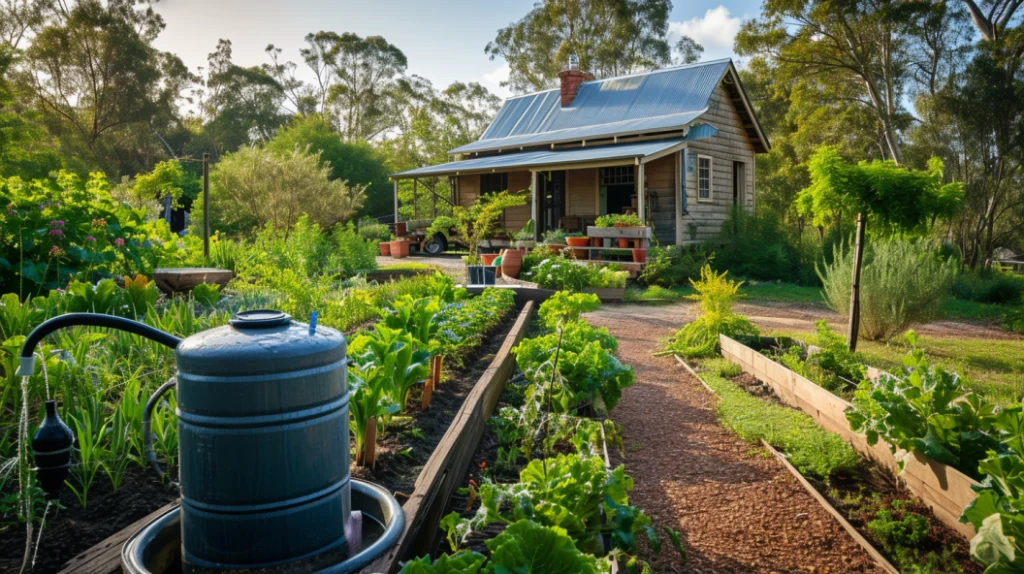
Considering Alternative Off-Grid Dwellings
If the minimalist square footage of tiny homes doesn’t align with your vision, there’s a diversity of alternative structures to consider for your off-grid abode. Let’s compare some popular options:
| Dwelling Type | Pros | Cons | Best For |
|---|---|---|---|
| Cabins | Rustic charm, stable | May require more maintenance | Those preferring a traditional aesthetic |
| Shipping Containers | Durable, modular | Can require extensive modification | DIY enthusiasts and modular design fans |
| Homes on Wheels | Mobility, flexibility | Limited space | Individuals with wanderlust |
As you contemplate the array of housing styles, from stationary and serene cabins to dynamic and mobile homes on wheels, remember that each choice offers unique advantages. Factor in your prioritization of mobility, space, and environmental impact to align with your sustainability goals. Whichever path you choose, rest assured that innovative solutions and community support are available to guide you along the way to your personalized space of self-sufficiency.
Maximizing Renewable Energy Sources for Your Home
With the growing urgency to adopt sustainable living practices, understanding how to efficiently harness renewable energy sources is of paramount importance. Specifically, integrating solar power into your home’s energy system offers a promise of self-reliance and environmental stewardship. Before you embark on this transition, it’s critical to conduct a thorough evaluation of your energy needs and the potential costs involved with setting up a solar power system.
Assessing Your Off-Grid Energy Needs
To kickstart your journey towards an energy-efficient home, begin by assessing your daily power consumption. This will involve cataloging all your electric appliances and devices to calculate the total wattage used. Remember, the goal of off-grid living isn’t just to replicate the energy usage you had on the grid, but to optimize and reduce it wherever possible.
Cost Evaluation of Solar Power Systems
Investing in a solar power system entails understanding the upfront costs and the long-term benefits. While the initial expense may be a consideration, the return on investment can be quite significant, thanks to reduced utility bills and potential tax incentives. The actual cost will depend on the size and complexity of the system you require to meet your energy needs.
| System Component | Description | Rough Cost Estimate |
|---|---|---|
| Solar Panels | Photovoltaic cells that convert sunlight into electricity | $0.70 to $1.50 per watt |
| Inverters | Converts DC electricity generated by panels into AC electricity | $0.70 to $1.00 per watt |
| Batteries | Stores excess power for use when sunlight is unavailable | $200 to $15,000 depending on capacity and technology |
| Installation and Additional Equipment | Professional services and miscellaneous items such as wiring and mounting hardware | $1,000 to $5,000+ |
Please keep in mind these costs are estimates and can vary based on location, system specifications, and market fluctuations. Additionally, the potential for tax deductions and incentives could further influence your net investment.
Adopting renewable energy sources for your home not only reduces your carbon footprint but also signifies a commitment to a more sustainable lifestyle. As you embark on this transformative journey, arm yourself with knowledge, and be prepared to reap the array of benefits that solar power can provide.
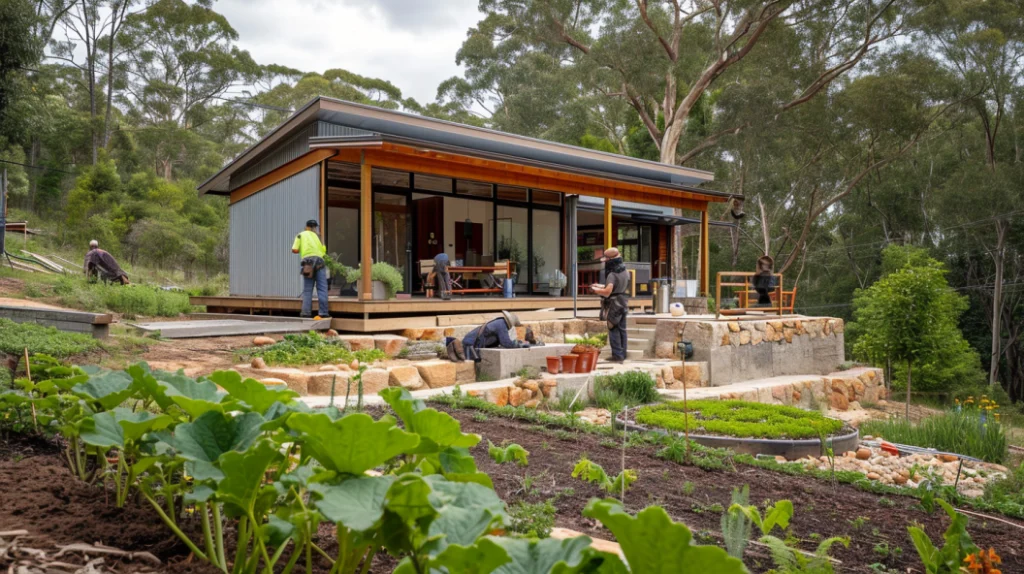
Building an Efficient Off-Grid Homestead
Embarking on the Off-Grid Living Essentials journey, you understand that your homestead is not simply a place to reside; it’s a statement about your commitment to sustainability and self-sufficiency. To achieve this, a well-rounded approach encompassing water conservation and sustainable agriculture practices is vital. By adopting these methods, you’ll not only support the environment but also forge a resilient, autonomous lifestyle.
Off-Grid Water Conservation Strategies
One of the pillars of off-grid living is managing the precious resource of water with care and responsibility. Water conservation strategies are critical to ensuring the longevity and sustainability of your homestead. You might leverage advanced rainwater harvesting methods or install a greywater system to reuse water efficiently. Below, find a table outlining various water conservation methods tailored for off-grid living.
| Conservation Method | Description | Benefits |
|---|---|---|
| Rainwater Harvesting | Capturing and storing rainwater for household use. | Reduces dependency on other water sources; renewable supply. |
| Greywater Recycling | Reusing water from sinks, showers, and washing machines for irrigation. | Greatly lowers water waste; beneficial for plant growth. |
| High-Efficiency Fixtures | Faucets and toilets designed to use minimal water. | Saves significant quantities of water; lower utility costs. |
| Native Landscaping | Using plants native to the region that require less water. | Minimizes the need for additional watering and maintenance. |
Sustainable Agriculture Practices
Beyond water savings, the heart of your homestead’s sustainability lies in the soil of your gardens and pastures. Sustainable agriculture involves methods that maintain and improve the health of your land while producing nutritious food. Integrating crop rotation, organic pest control, and companion planting are just a few techniques to enhance soil fertility and control pests naturally without harmful chemicals. Moreover, consider the list below to embrace a range of sustainable practices in your agricultural endeavors.
- Composting: Turning organic waste into rich soil amendments.
- Permaculture: Designing agricultural ecosystems intended to be sustainable and self-sufficient.
- Polyculture: Growing multiple crops in the same space to promote diversity and reduce disease.
- Raised Bed Gardening: Using elevated soil beds for better soil and plant management.
- Livestock Rotation: Rotating animals to different pastures to improve soil health and reduce overgrazing.
Implementing these practices not only solidifies your food security but equally contributes to a more ecologically balanced homestead that can sustain itself and thrive.
Armed with the knowledge from Sustainable Home Magazine and a pledge to the core tenets of off-grid living, your journey towards an efficient, sustainable homestead is well within reach. With strategic planning and deliberate action, you can savor the freedom that comes from a life that’s both environmentally mindful and wholly fulfilling.
Design Principles for Off-Grid Construction
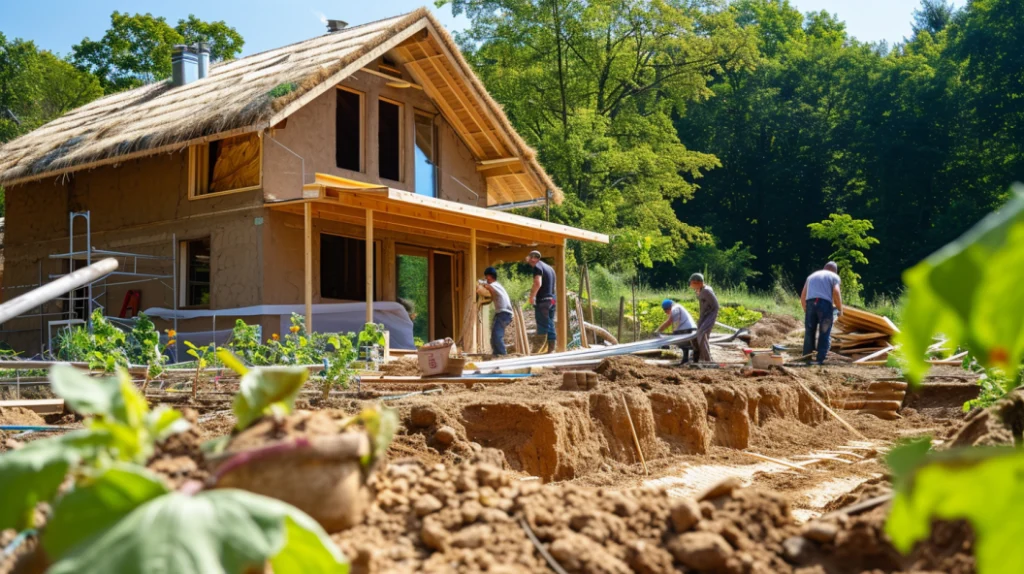
Embarking on an off-grid lifestyle brings with it the thrilling challenge of designing a home that is not just a shelter, but a self-sustaining hub that echoes the ethos of sustainable living. The right design choices can turn natural elements like the sun and earth into allies, directly impacting energy consumption and comfort levels. Let’s delve into the design practices that fortify off-grid construction.
Passive Solar Design: A Game-Changer
When the sun becomes a central figure in home heating and cooling, you tap into an untapped reservoir of natural energy – thus, the magic of passive solar design comes into play. This architectural approach centers around incorporating materials and design elements that capture, store, and distribute solar energy without reliance on mechanical means. For instance, by placing large, south-facing windows and designing overhangs that provide shade in the summer, you utilize the sun’s trajectory to your advantage throughout the seasons.
Another crucial aspect is thermal mass, implemented through materials like cob, brick, or concrete, which absorb and gradually release heat, mitigating temperature fluctuations. For those facing the chill of winter, remember that thermal mass can absorb warmth during daylight hours and radiate it as temperatures drop, thereby complementing your sustainable heating solutions.
Choosing Eco-Friendly Building Materials and Insulation
The choice of eco-friendly building materials not only determines your off-grid home’s environmental footprint but also its efficiency and durability. Bamboo, reclaimed wood, or sustainably sourced timber are not only environmentally responsible options but they also blend seamlessly with natural surroundings. Similarly, insulation crafted from sheep’s wool, hemp, or recycled denim ensures that the energy your home stores isn’t lost to the whims of the weather.
Consider the building materials and insulation not as mere construction components, but as the very fabric that holds together your off-grid dream. They are the silent guardians that shield you from the extremes, from the scorching heat to the numbing cold, making every energy ration stretch further without sacrificing comfort. In essence, choosing the right building materials and insulation is pivotal in establishing your home as a paragon of efficiency within your off-grid paradise.
Sustainable Home Magazine congratulates you on taking the significant step towards constructing your off-grid sanctuary. By implementing passive solar design and selecting eco-friendly materials, you pave the way for a residence that lives in harmony with nature while providing for your needs. Remember, every sustainable choice you make now lays the foundation for a future where living off the grid is not just possible, but profoundly rewarding.
Sustainable Living: Off-Grid Food and Water Sources
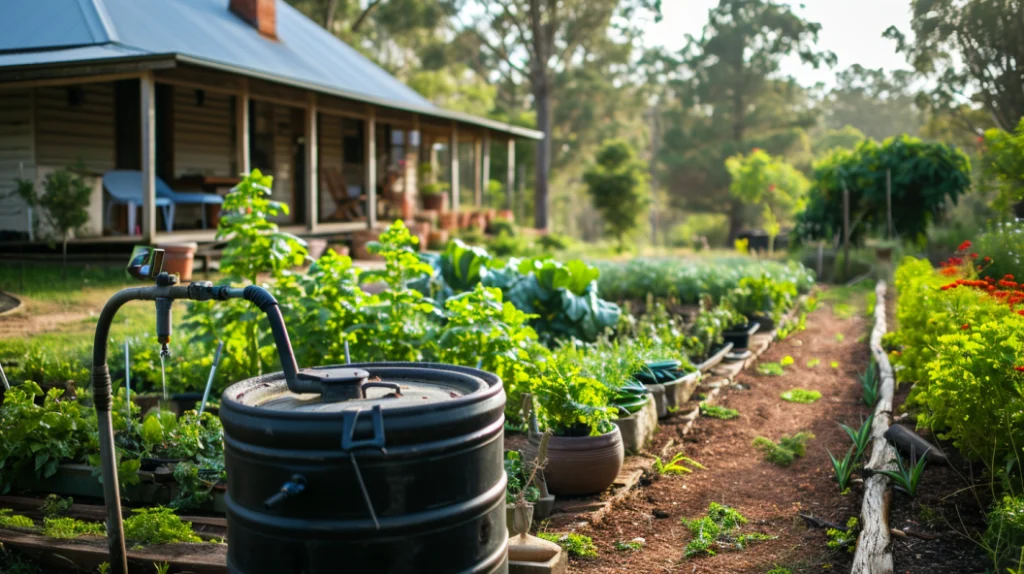
Embracing the essentials of sustainable living begins with establishing a self-reliant food and water system. An off-grid garden is not just a patch of land; it’s a source of nourishment, a haven for biodiversity, and a step towards a secure and resilient lifestyle. Let’s dive into how you can cultivate a thriving off-grid garden and ensure a reliable water supply for your homestead.
Establishing Your Off-Grid Garden and Food Supplies
When creating your off-grid garden, selecting the right crops is just as important as understanding the soil and local climate conditions. Plant a mix of vegetables, fruits, and herbs that are both nutritious and acclimatized to your region.
- Vegetables: Opt for leafy greens and root vegetables that can be harvested in a rotation for constant supply.
- Fruits: If space permits, plant dwarf varieties of fruit trees alongside berries for a healthy yield year-round.
- Herbs: Culinary and medicinal herbs are useful for kitchen and home remedies, doubling up the utility of your garden.
Incorporate sustainable practices like composting to revitalize the soil, and consider permaculture principles to design a garden that mimics natural ecosystems, leading to a more sustainable and efficient method of farming.
Securing a Reliable Water Supply Off-Grid
Water is the lifeblood of any homestead. Harvest rainwater using catchment systems or explore groundwater sources with a well. Prioritizing safe and reliable water supply includes setting up a proficient filtration system to convert your collected water into potable water.
| Rainwater System Components | Function | Considerations |
|---|---|---|
| Gutters and downspouts | Channel water from the roof to the storage | Material stability and roof compatibility |
| First-flush diverter | Diverts initial flow of water containing debris | Capacity to handle local rainfall intensity |
| Storage tanks | Secures collected water | Material that ensures water quality and volume requirements |
| Filtration system | Ensures water safety for consumption | Filter type based on water quality and uses |
Using a combination of responsible consumption and efficient collection systems ensures the longevity and sustainability of your off-grid resources. With diligence and commitment, your sustainable living efforts can flourish, providing a foundation for a healthy, autonomous lifestyle.
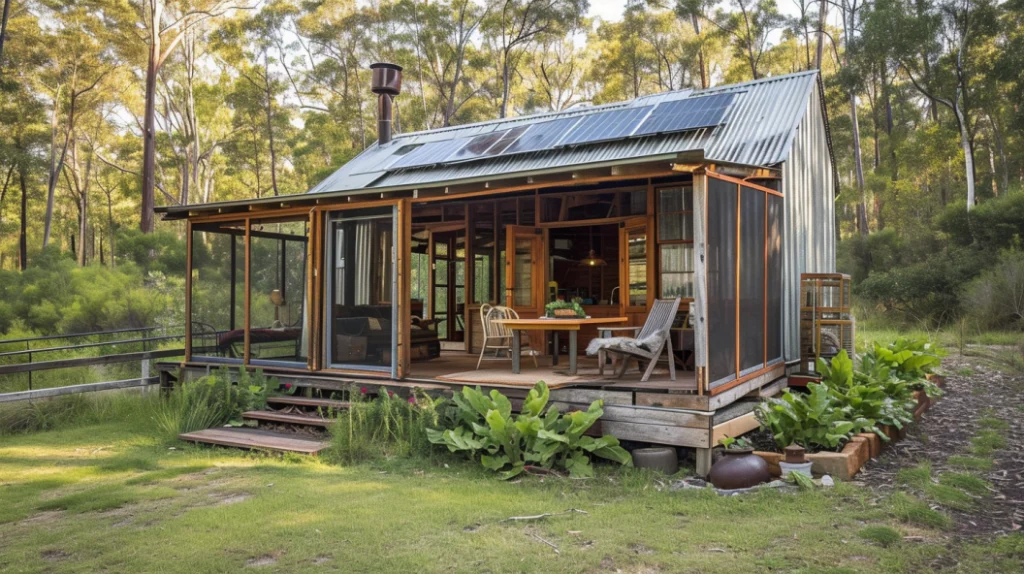
Generating and Storing Power in an Off-Grid Setting
When you choose to live off the grid, one of the most critical components to ensure continuous comfort and convenience is the ability to generate and store your energy. Whether it’s for lighting, cooking, or keeping your communications alive, crafting a robust system that’s both efficient and sustainable is key to a successful off-grid lifestyle. Let’s explore the popular solar power infrastructure and delve into alternative renewable energy options that could suit your green energy needs.
Solar Power Infrastructure for Off-Grid Homes
Solar power stands out as a highly effective source of energy for those living off the grid. The basic components of this solar power infrastructure include photovoltaic (PV) panels, charge controllers, inverters, and batteries. The PV panels capture sunlight and transform it into electricity, while the inverter converts this into usable power for your home appliances. But what about when the sun sets? That’s where batteries come in—storing excess energy generated throughout the day for use at any time. Effectively managing this system ensures that generating power off-grid remains a seamless process.
Exploring Other Renewable Energy Options
Don’t limit yourself to just one form of renewable energy; diversifying your sources can lead to increased reliability and efficiency. Depending on your geographical location and natural resources, other renewable energy options such as wind and hydro power could complement your solar setup. Wind turbines, which convert wind energy into electricity, can be particularly beneficial in areas with consistent wind patterns. Similarly, if you have access to flowing water, a micro-hydroelectric system can provide a constant and reliable energy supply.
Assessing your environment and requirements will guide you to the most practical and sustainable energy system for your off-grid home. Committing to renewable energy options not only reduces your ecological footprint but also assures independence from the conventional grid. The pursuit of a clean energy mix is indeed at the heart of the off-grid philosophy, promising a life unbound by traditional limitations and aligned with the rhythm of nature’s offerings.

Tips for a Successful Off-Grid Transition
Moving towards an off-grid lifestyle can be an exhilarating yet challenging endeavor. It calls for a complete engagement with your environment and an earnest commitment to living sustainably. Whether you’re seeking to disconnect partially or fully from the electrical grid, these off-grid living tips can ensure that your transition is both smooth and rewarding. Here’s what you need to consider for a successful off-grid transition.
Adapting to the Off-Grid Mindset
The first step in your journey is to embrace the off-grid mindset, which focuses on resilience, resourcefulness, and a strong sense of individual responsibility. It entails being ready for significant changes in your daily routines and consumption habits. Transitioning to off-grid living is not merely about acquiring new skills; it’s also about fostering a different outlook on life that prioritizes simplicity, self-sufficiency, and environmental consciousness. Remember, off-grid living is not an escape from society, but rather a deliberate choice to live differently within it.
Prioritizing Investments and Skilling Up
Investing in your new lifestyle is crucial to ensure a smooth and successful off-grid transition. Prioritize the foundational aspects of your new home – be it renewable energy systems, such as solar panels and water filtration setups, or infrastructure for sustainable agriculture to support your food supply. Concurrently, it’s time to upskill; learning and mastering essential crafts is pivotal in an off-grid environment. Hands-on skills like basic carpentry, plumbing, and gardening will become part of your daily life, ensuring you can maintain and thrive in your new setting.
- Invest in quality resources early to avoid unnecessary expenses later.
- Reach out to off-grid living resources and communities for practical advice and assistance.
- Consider conducting a skills audit and looking for learning opportunities, such as workshops or online courses.
Beyond the physical setup and hard skills, connect with others who have embarked upon this journey. Off-grid living resources like Sustainable Home Magazine or community forums are full of insights into a successful off-grid transition. Engaging with fellow off-gridders can provide you with a sense of camaraderie and a practical support network. They can also be invaluable for discovering the subtler nuances of off-grid living that only experience can teach.
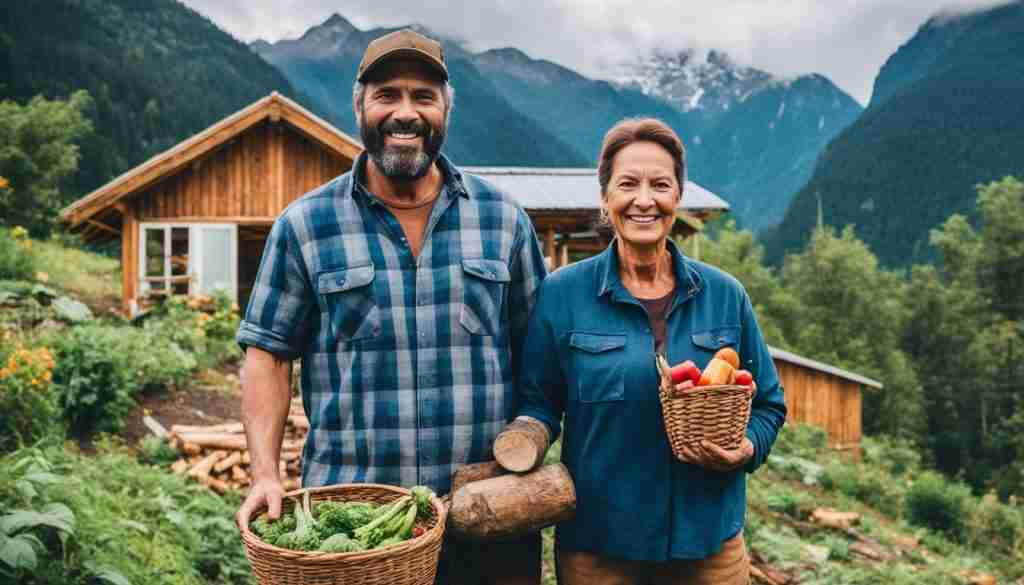
In summary, venturing into an off-grid lifestyle demands more than just a desire for independence; it requires preparation, education, and integration into a community that shares your values. With these off-grid living tips, you’re well on your way to establishing a self-sufficient and fulfilling lifestyle. Remember, each step forward is a step towards a more sustainable and rewarding future.
The Financials of Off-Grid Living
Embarking on an off-grid journey can be as rewarding financially as it is personally, but understanding the financials of off-grid living is essential before taking the plunge. Let’s delve into the expenditures and potential cost savings, as well as look at options to help fund off-grid projects effectively.
Understanding Costs and Potential Savings
Living off-grid involves initial investments that include setting up your energy systems and securing a reliable water source. These could be costly but think of them as the foundation for your future savings. Over time, these investments may lead to significant reductions in traditional living expenses, such as monthly utility bills. Let’s not forget that the financials of off-grid living also involve considerations such as property taxes and maintenance. But the trade-off is considerable: a sustainable lifestyle that potentially becomes more economical with each passing year.
Funding Your Off-Grid Dream
Finding the means to finance your off-grid dream can be as innovative as living it. Beyond dipping into your savings, other avenues for funding off-grid living can include loans, particularly those with favorable terms for eco-friendly projects. Additionally, you may find grants that support sustainability initiatives, which could offset a portion of the upfront costs. It’s essential to explore all the possibilities and align them with a well-thought-out budget for a successful transition.
| Expense Category | Initial Cost | Long-Term Savings | Notes |
|---|---|---|---|
| Solar Power Setup | $10,000 – $20,000 | Reduces electricity bill | Eligible for tax incentives |
| Water System | $2,500 – $10,000 | No water utility fees | Cost varies by region and complexity |
| Housing | $20,000 – $100,000+ | Depends on use of natural materials & DIY | Includes tiny homes to custom builds |
| Land Purchase | $1,000/acre – $10,000/acre | Varies by location and size | Consider access to resources |
| Septic System | $3,000 – $10,000 | Long-lasting if maintained properly | May require permits |
Your commitment to off-grid living is not only a choice for personal independence but also a conscientious financial investment. With careful planning, the off-grid living costs can be managed and even reduced in comparison to a conventional lifestyle tethered to the grid. Remember, the objective is to establish a home that meets your needs while complying with a budget that sustains your ambition. Sustainable Home Magazine encourages you to assess the full picture—both the expenses and savings— to secure a thriving off-grid future.
Community and Networking in Off-Grid Lifestyles
As you delve into the world of off-grid living, you’ll quickly find that a robust off-grid living community isn’t just a perk—it’s a necessity. These networks provide vital off-grid living resources, foster knowledge sharing, and create social stability similar to traditional neighborhoods. In this journey, valuable friendships are formed, and innovative ideas take flight within a community context. At Sustainable Home Magazine, we’ve seen firsthand how these connections can enrich the off-grid experience immeasurably.
Importance of Community Support
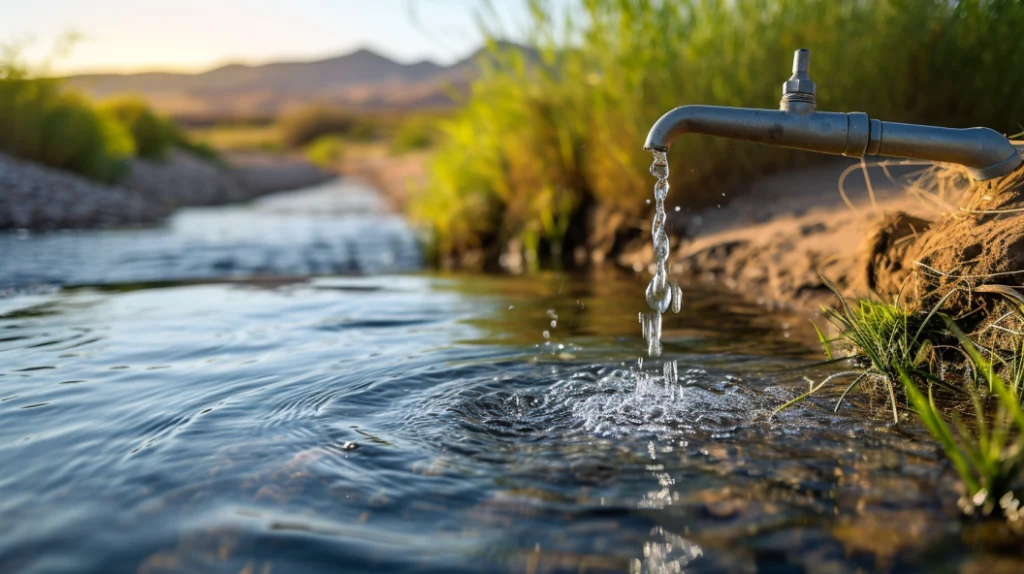
When facing the myriad of challenges in off-grid life, a supportive community can be the difference between flourishing and floundering. These groups offer a foundation for troubleshooting, and emotional support, and can extend a helping hand when the going gets tough. Learning from the successes and failures of your peers provides a unique opportunity to apply tested strategies to your living situation.
Leveraging Off-Grid Living Resources and Knowledge Sharing
While the independence of off-grid living is celebrated, interdependence among community members amplifies the benefits exponentially. Sharing tools, skills, and knowledge not only helps to conserve resources but also fosters an environment of learning and growing together. To demonstrate the practicality of knowledge exchange, let’s take a look at a table showcasing different types of shared off-grid living resources within a community.
| Resource | Description | Benefits |
|---|---|---|
| Solar Panel Maintenance Knowledge | Expertise in installing and maintaining solar systems | Reduces the collective cost of energy and promotes sustainable practices |
| Rainwater Collection Systems | Shared designs and blueprints for effective water harvesting | Ensures water security and aids in conservation efforts |
| Organic Farming Techniques | Community workshops on organic gardening and farming | Enhances food autonomy and promotes healthy diets |
| Emergency Preparedness Plans | Cooperative strategies for dealing with natural disasters | Improves safety and readiness within the off-grid enclave |
The real power of an off-grid living community lies not just in what’s tangibly shared, but also in the collective wisdom that is passed down and across its members. Whether you’re just starting or are a seasoned off-gridder, taking part in these exchanges keeps you engaged in a cycle of constant growth. Remember, the most invaluable resource in off-grid living is the community itself. The bonds you forge through collaboration and support will ensure your off-grid life is not just sustainable, but also truly enriching.
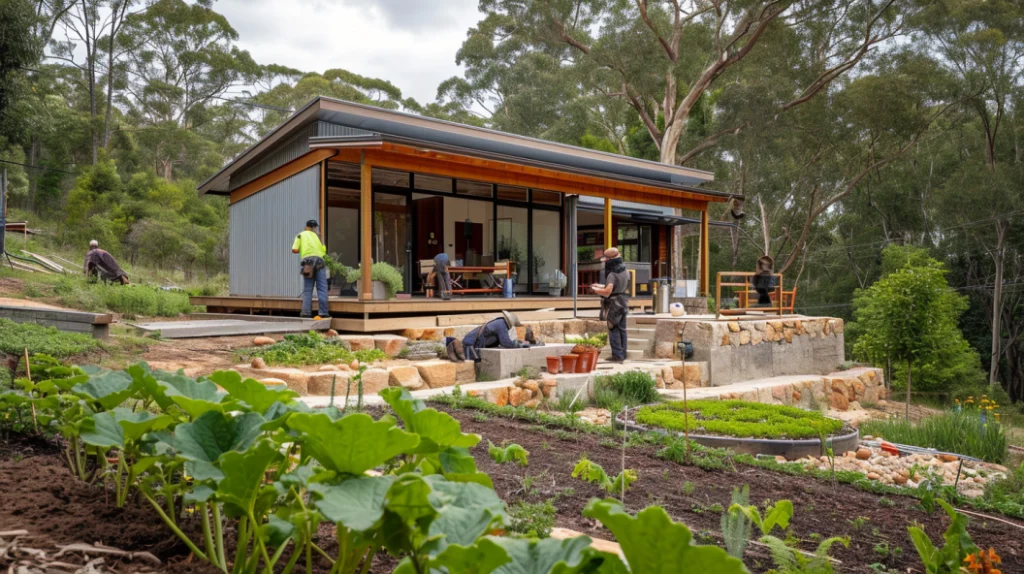
Maintaining an Off-Grid Lifestyle Long-Term
Embracing an off-grid lifestyle is more than a temporary escape from the modern world; it requires a commitment to sustainable lifestyle longevity and continuous refinement of your living practices. As you navigate the intricacies of maintaining off-grid living, remember that it’s not just about survival but thriving within a self-sustaining environment.
Embracing Challenges and Continuous Learning
The path to sustaining an off-grid life is paved with challenges—both expected and unforeseen. Technical difficulties with renewable energy systems, changes in climatic conditions, and evolving needs of your family unit are just a few of the hurdles you might face. By accepting these challenges as opportunities for growth, you engrave a resilient mindset integral to success in the long run.
Ongoing learning is the cornerstone of future planning off-grid. Keeping up-to-date with advancements in sustainable technologies and innovative self-reliance methods can greatly enhance your autonomy. Whether it’s a new way to conserve water or a breakthrough in solar panel efficiency, staying informed allows you to adapt and improve your homestead’s sustainability.
Longevity and Planning for the Future
For your off-grid journey to endure, proactive future planning is essential. This means not only preparing for immediate needs but also looking ahead to what challenges the future might hold. Investing in durable systems and quality materials today can prevent costly problems down the line, ensuring the longevity of your sustainable lifestyle.
Anticipating changes in technology, policy, and your circumstances can help you to make informed decisions that contribute to a steadfast off-grid living experience. Resource management, particularly in renewable energy and organic food production, demands both attention and innovation for a truly sustainable and efficient lifestyle.
Ultimately, the key to long-term maintenance of your off-grid haven lies in flexibility and the willingness to embrace a lifestyle of perpetual adaptation and learning. With a solid foundation built upon sustainable practices, you’ll be well-equipped to enjoy the freedom and fulfillment that comes from a life less ordinary.
| Aspect | Considerations | Future Planning |
|---|---|---|
| Energy | Efficiency of current solar/wind systems | Upgrades for increased capacity and storage |
| Water | Current conservation and purification methods | Exploring new technologies for harvesting and recycling |
| Food | Productivity of garden and livestock operations | Scaling and diversification of food sources |
| Housing | Insulation and passive solar designs in use | Advancements in green building materials and techniques |
| Community | Current involvement and resource sharing | Building stronger networks and cooperative initiatives |
Conclusion
Embarking on an off-grid journey embodies the essence of a reimagined life—one that is harmoniously balanced with nature and undergirded by the principles of self-reliance and sustainability. As you consider initiating your venture into off-grid living, remember that the process involves much more than a change in address or lifestyle—it’s an altruistic commitment that benefits both you, the planet, and generations to come. Sustainable living is not just about residing away from the urban sprawl; it’s about cultivating a holistic relationship with the environment, fostering a spirit of independence, and discovering a path to energy independence. The insights shared here, from the pages of Sustainable Home Magazine, aim to steer you towards a living experience where every sunrise marks another day of personal fulfillment and ecological respect.
Final Thoughts on Living Off the Grid
The allure of off-grid living is undeniable, beckoning with the promise of tranquility removed from the constant hum of technologically dense societies. This lifestyle is not without its challenges, but the rewards of personal growth and a sustainable lifestyle far outweigh the rigors of its attainment. By methodically gearing up with Off-Grid Living Essentials, and arming yourself with patience and perseverance, the reality of a self-sufficient home is within reach. Let energy independence be not just a goal, but a palpable feature of your day-to-day life—one that defines freedom in its most elemental form.
Getting Started on Your Off-Grid Journey
To begin your off-grid journey, draw inspiration from those who have tread this path before you. Allow their stories to imbue you with confidence, while you equip yourself with knowledge of sustainable practices that echo through every aspect of off-grid living. Assess your readiness and take to heart the principles and strategies that will form the foundation of your off-grid aspirations. Your resolve in this transformative decision will herald a significant step towards resourcefulness and environmental guardianship—a true testament to the versatile and enduring human spirit.
FAQ
What are the basic essentials for off-grid living?
The basics for off-grid living include a sustainable home, renewable energy sources such as solar power, access to water through conservation techniques or a renewable source, and sustainable agriculture for food self-sufficiency.
Why is off-grid living becoming more popular in 2023?
Off-grid living is gaining traction due to a growing desire for a sustainable, independent lifestyle, closer connections to nature and family, and the freedom that comes with self-sufficiency, particularly in light of climate change and technological advancements in renewable energy and tiny home designs.
What factors should I consider when buying land for off-grid living?
When purchasing land, consider legal allowances for off-grid living, zoning, and building codes, access to natural resources like water and sunlight, proximity to urban areas, and seasonal accessibility. The land should support your plans for food, water, and potentially energy production.
What are the advantages of a tiny home for off-grid living?
Tiny homes offer efficiency, require less energy and materials to build and maintain, are less intrusive on the land, and can be designed with eco-friendly features, making them ideal for an off-grid lifestyle.
How do I determine my energy needs for an off-grid solar power system?
Calculate your daily energy usage by accounting for all appliances and devices to be powered. This will help determine the size of the solar panel array, batteries, and inverter system you’ll need for your off-grid home.
What are some water conservation strategies for off-grid living?
Strategies include collecting rainwater, using greywater systems, establishing a well if accessible, utilizing water-efficient appliances, and implementing conservative water usage habits.
How can I practice sustainable agriculture on my off-grid homestead?
Integrate permaculture principles, plan a diverse garden, consider raising livestock if space allows, compost waste to enrich the soil, and use natural pest management techniques without chemicals.
How does passive solar design improve off-grid home efficiency?
Passive solar design takes advantage of the sun’s natural energy for heating and cooling, through proper orientation, window placement, and choice of materials with high thermal mass, reducing the need for additional energy inputs.
How do I ensure a reliable food supply in my off-grid home?
Plan and maintain an off-grid garden, learn to preserve seasonal produce, and consider raising chickens or other small livestock for meats and other products, ensuring a year-round supply of food.
Besides solar, what renewable energy options are suitable for off-grid living?
Depending on your location, wind turbines, micro-hydroelectric systems, and biomass generators might be viable alternatives or complements to solar energy for off-grid living.
What are some challenges I might face during the transition to off-grid living?
You may encounter challenges related to learning new skills, adapting to less convenience, navigating initial start-up costs, weather variability, and adjusting to a more labor-intensive lifestyle.
How can I finance my off-grid lifestyle?
Financing options include savings, personal or property loans, green energy grants and incentives, and crowdfunding. Research which options best suit your financial situation and sustainability goals.
Why is community important in off-grid living?
Community provides support, shared experiences, knowledge exchange, and may help with acquiring resources or assistance. Building a network can ease the transition and maintenance of an off-grid lifestyle.
What should I consider for long-term off-grid living sustainability?
Focus on building resilient systems, continuous learning about self-sufficient practices, and planning for future needs or expansions of your homestead. Flexibility and the ability to adapt will be key for longevity.
How do I start my off-grid living journey?
Begin by researching, planning your needs and goals, assessing your financial options, learning necessary skills, and connecting with the off-grid community. Consider starting small with gradual transitions to ease into the lifestyle.

